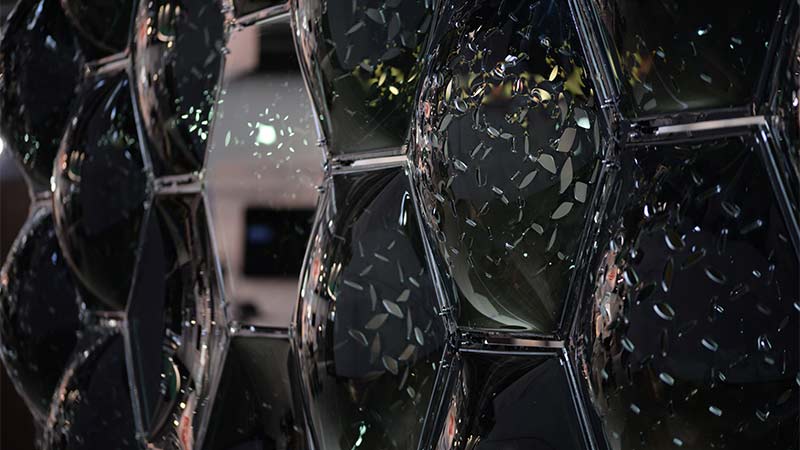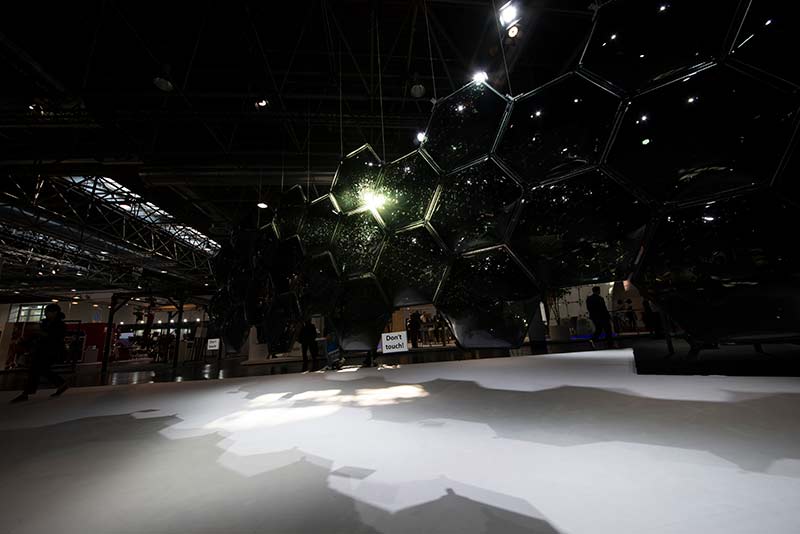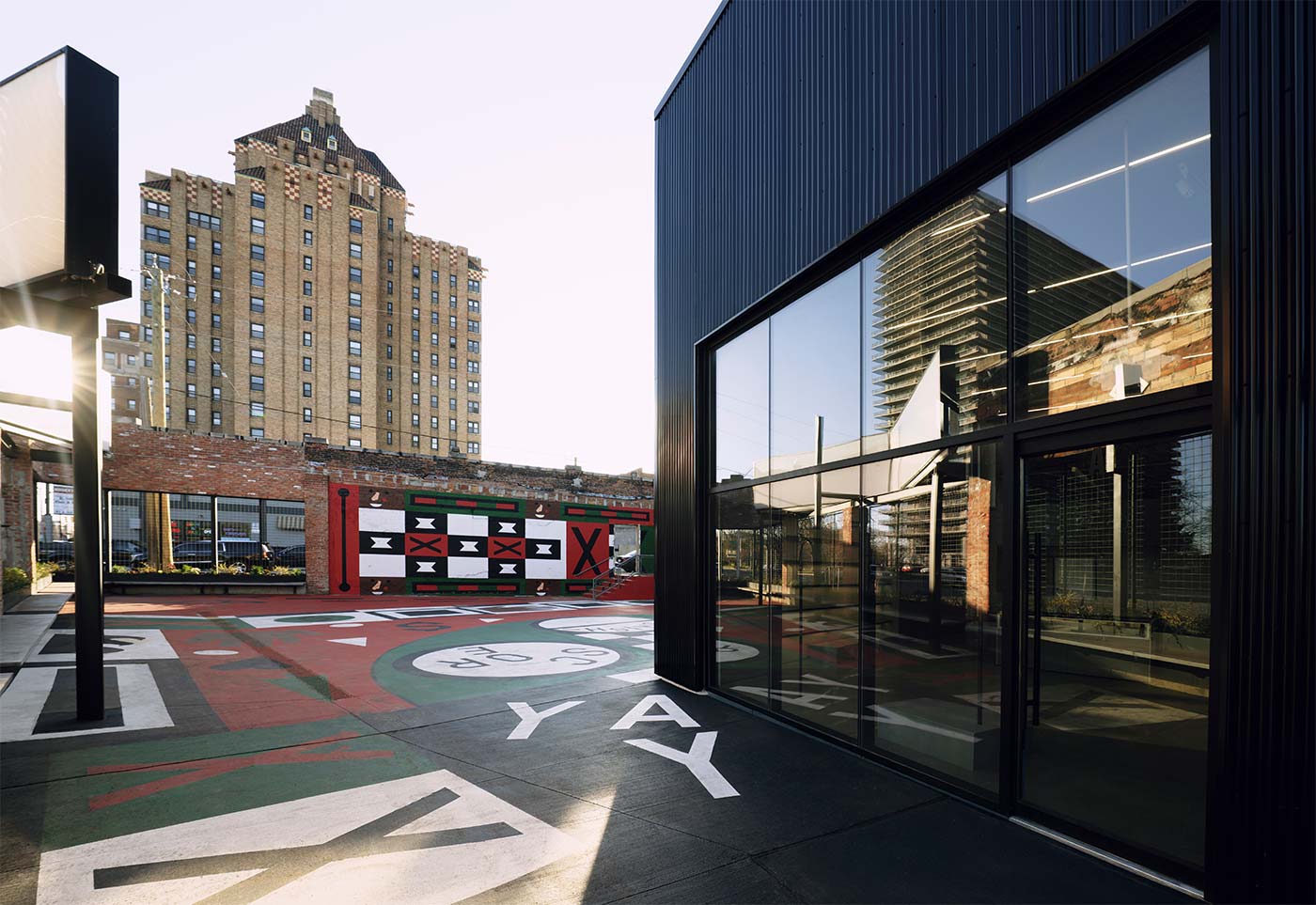
Long Range Glass Recognized with Architect Magazine R+D Award
Long Range, a project by associate professors of architecture Catie Newell and Wes McGee, along with Zackery Belanger, director of Arcgeometer studio, has been honored with a 2022 R+D Award from Architect Magazine.
The project consists of 64 hexagonal glass pieces double layered to form 32 panels. Moving from flat panels at one end to increasingly slumped and perforated panels, it culminates in deeply curved panels with porous openings.
The project began with Newell and McGee exploring the creation of complex surfaces out of glass. Some of their early work had intriguing acoustic effects that merited further exploration and led them to team up with Belanger for the project that became Long Range Glass.
“Glass lets us control geometry in an interesting way,” said Newell. “We recognized that we could develop a system that, based on either perforations that open up the form or how much we slumped it, from flat to very curved, worked along the acoustic spectrum, which was surprising. We were able to get reflective, diffusive, transmissive, and even absorptive behaviors.”
McGee added, “Glass is one the more challenging materials in the built environment to work with, particularly if the geometries are non-standard. This project emerged from a significant amount of testing and prototyping to understand what the system was capable of.”
The result of their work is a visually striking piece that also performs well acoustically. Avideh Haghighi, an R+D Award juror, said, “Form and function are intertwined in a beautiful balance between visual and acoustic performance.”

Long Range is receiving attention beyond the R+D Award as well. The team was invited to bring the project to Glass Technology Live in Germany in September 2022. Held within Glasstec, a trade fair designed for industry professionals, the exhibition is dedicated to innovative work primarily from universities or firms entirely devoted to the research and development of glass.
“We stood out as the group that was formally manipulating flat glass,” said Newell. “There was a lot of work looking at the structural capabilities, the fireproofing, and making sure birds don’t run into the glass. Most interesting to us, there were other teams working on interesting molding and assembly systems which is the next step for us.”
That next step means working on an entire enclosure that could fully encompass the occupants while taking advantage of the unique forms glass can create. “For us, glass is the material that allows this kind of shape-making to happen in an exciting way,” said Newell.









